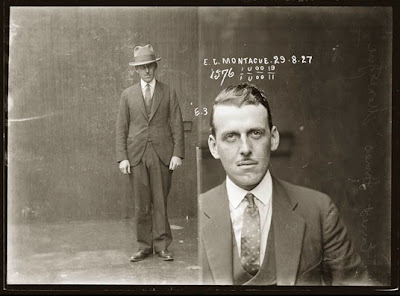 |
| Farley Granger and Robert Walker in 'Strangers on a Train.' |
 |
| Alfred Hitchcock at work. |
A number of celebrated writers have had tortured relationships with Hollywood. Take Raymond Chandler, the writer whose work is closely associated with Los Angeles (he detested the city), and whose crime fiction elevated the genre to an art form.
Chandler was lured to the screen trade during a brief period in movie history when the studios thought that great novelists could automatically write great scripts. Some did, but the majority failed and soon slunk back to the burgs from whence they came.
Others hung around L.A., growing increasingly despondent
and bitter toward the philistines who run the movie business. That was certainly the
case with Chandler, who gave us outstanding crime novels, including “The
Big Sleep,” “Farewell, My Lovely” and “The Long Goodbye.” He also
helped knock off one of the all time greatest film noir scripts, “Double
Indemnity.”
Then he lost his touch and his life and career did a slow
fade. Before the frame went black, Chandler crossed paths with Alfred
Hitchcock and worked on the screenplay for the British director’s
“Strangers on a Train.”
 |
| Raymond Chandler |
It was six years after Chandler’s collaboration with director Billy Wilder on “Double Indemnity,” which proved to be a fine, if difficult, partnership. But Chandler’s pairing with Hitchcock was a match made in hell.
Below is a letter Chandler sent to the director out of frustration over changes made to his script. A heavy drinker who years earlier lost his job as an oil company executive over his excessive use of alcohol, Chandler could be blunt and thin skinned, as his letter to the director suggests. Clearly, working in a collaborative medium was not his thing.
Source: The Raymond Chandler Papers (2000)
Dec. 6, 1950
Dear Hitch,
In spite of your wide and generous disregard of my communications on the subject of the script of Strangers on a Train and your failure to make any comment on it, and in spite of not having heard a word from you since I began the writing of the actual screenplay—for all of which I might say I bear no malice, since this sort of procedure seems to be part of the standard Hollywood depravity—in spite of this and in spite of this extremely cumbersome sentence, I feel that I should, just for the record, pass you a few comments on what is termed the final script. I could understand your finding fault with my script in this or that way, thinking that such and such a scene was too long or such and such a mechanism was too awkward. I could understand you changing your mind about the things you specifically wanted, because some of such changes might have been imposed on you from without. What I cannot understand is your permitting a script which after all had some life and vitality to be reduced to such a flabby mass of clichés, a group of faceless characters, and the kind of dialogue every screen writer is taught not to write—the kind that says everything twice and leaves nothing to be implied by the actor or the camera. Of course you must have had your reasons but, to use a phrase once coined by Max Beerbohm, it would take a "far less brilliant mind than mine" to guess what they were.
Regardless of whether or not my name appears on the screen among the
credits, I'm not afraid that anybody will think I wrote this stuff.
They'll know damn well I didn't. I shouldn't have minded in the least if
you had produced a better script—believe me. I shouldn't. But if you
wanted something written in skim milk, why on earth did you bother to
come to me in the first place? What a waste of money! What a waste of
time! It's no answer to say that I was well paid. Nobody can be
adequately paid for wasting his time.
Signed,
Raymond Chandler











